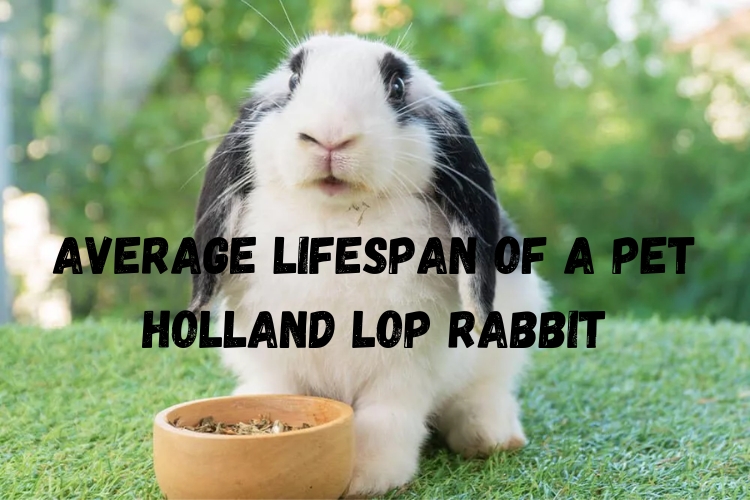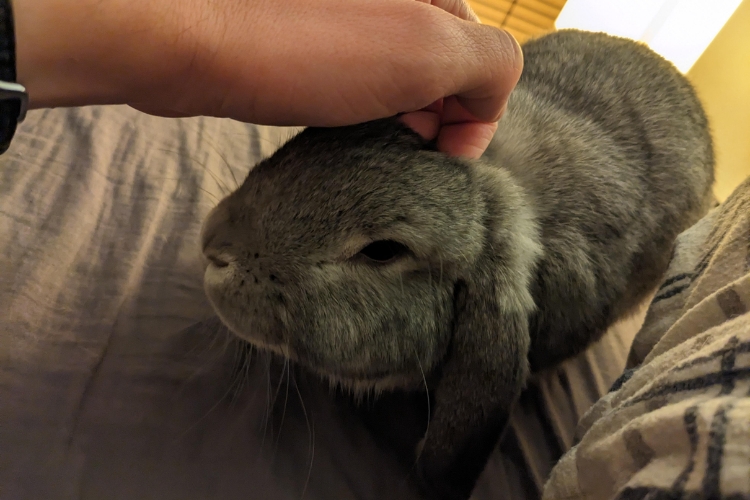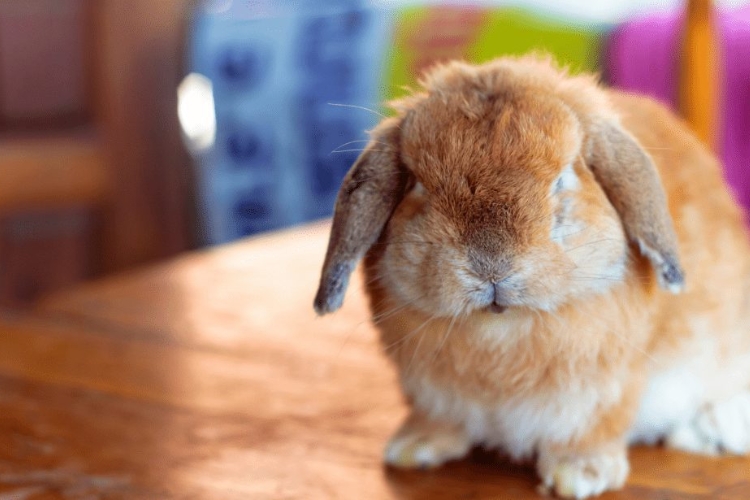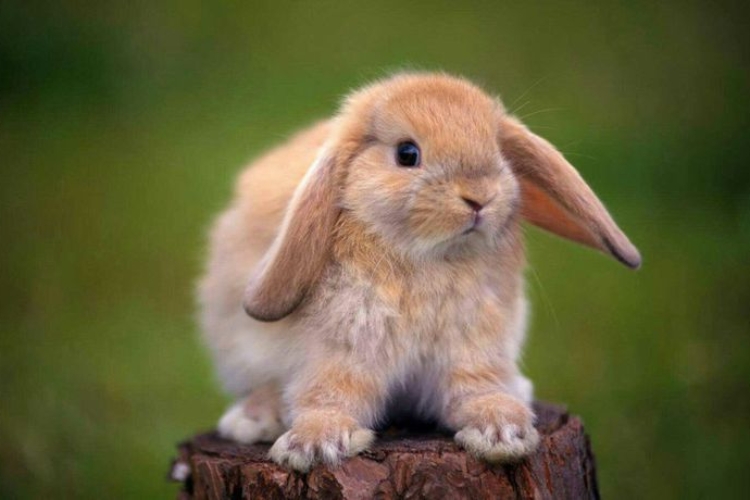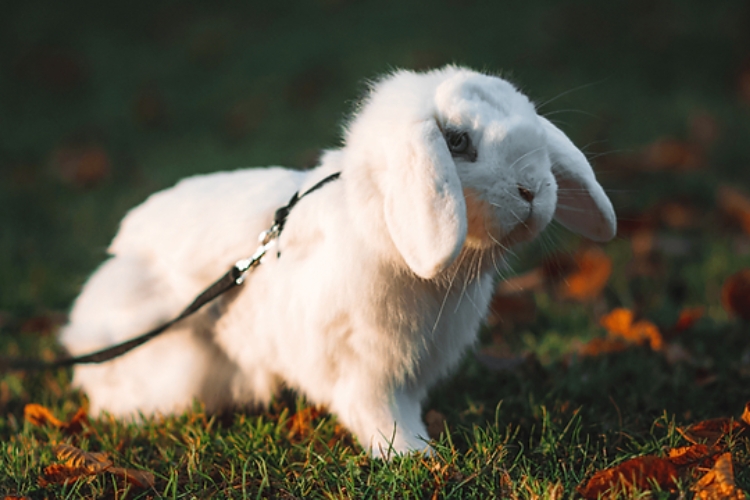The Holland Lop rabbit is a popular pet known for its distinctive floppy ears and affectionate nature. As with any pet, prospective and current owners are often curious about the average lifespan of their furry companions. Understanding the factors that contribute to their longevity and how to properly care for them can help ensure Holland Lops lead happy, healthy lives.
Today, we will be looking at the intricacies of the Holland Lop rabbit’s lifespan, exploring the influence of genetics, care, and environment on their well-being.
Key Takeaways
- The average lifespan of a pet Holland Lop rabbit is influenced by a variety of factors including diet, exercise, and genetics.
- With proper domestic care, Holland Lop rabbits can live longer than many other rabbit breeds, highlighting the importance of a nurturing environment.
- Regular veterinary visits and preventative measures against common health issues are crucial for extending the lifespan of Holland Lop rabbits.
- Genetic diversity and selective breeding play significant roles in the health and longevity of Holland Lop rabbits.
- Creating an ideal living environment that includes proper housing, balanced indoor and outdoor time, and social interaction can positively affect a Holland Lop’s lifespan.
Understanding the Lifespan of a Holland Lop Rabbit
Factors Influencing Longevity
The lifespan of a Holland Lop rabbit is not a fixed figure; it is shaped by a variety of factors. Genetics play a pivotal role, as inherited traits can significantly influence a rabbit’s predisposition to certain health conditions and its overall vitality. However, genetics is just one piece of the puzzle.
Environmental conditions also have a profound impact on the longevity of these rabbits. Proper housing, a stress-free living space, and the quality of human interaction can all contribute to a longer and healthier life. Below is a list of key factors that affect the lifespan of a Holland Lop rabbit:
- Genetics and hereditary health issues
- Quality of diet and nutrition
- Access to clean water and a hygienic living environment
- Regular exercise and mental stimulation
- Preventative veterinary care and timely treatment of illnesses
It is essential to recognize that while some factors are beyond our control, many aspects of a rabbit’s care and environment can be managed to promote a longer, healthier life.
Average Lifespan in Domestic Care
When considering the average lifespan of a Holland Lop rabbit in domestic care, it’s essential to recognize that these friendly and compact pets can enjoy a relatively long life with proper attention to their needs.
The typical lifespan of a Holland Lop rabbit ranges from 7 to 10 years, a duration that is influenced by various factors including diet, living conditions, and regular health care.
Holland Lop Rabbit Lifespan in Domestic Care:
- Friendly temperament
- Requires hay, pellets, veggies, fruit in diet
- Average weight: 2-4 pounds
Ensuring a clean and safe environment, alongside a balanced diet and regular veterinary visits, is crucial for the longevity of Holland Lop rabbits.
Owners should be mindful of the dietary and health needs of their Holland Lop rabbits to maximize their potential lifespan. By providing a nurturing environment and attentive care, these rabbits can thrive and become cherished companions for years to come.
Comparing Lifespan to Other Rabbit Breeds
When considering the lifespan of Holland Lop rabbits, it’s insightful to compare them with other popular breeds. Holland Lops generally live between 7 to 14 years, a range that reflects their robust nature when given proper care.
In contrast, the Mini Rex, another beloved breed, has a similar lifespan, reaching maturity around six to eight months of age.
| Breed | Average Lifespan |
|---|---|
| Holland Lop | 7-14 years |
| Mini Rex | 7-10 years |
| Netherland Dwarf | 10-12 years |
| Flemish Giant | 5-8 years |
| Dutch Rabbit | 5-10 years |
While genetics play a crucial role, environmental factors and the level of care provided can significantly extend a rabbit’s life.
It’s important to note that larger breeds like the Flemish Giant often have shorter lifespans, while smaller breeds such as the Netherland Dwarf can live longer. This information is not only useful for prospective pet owners but also for those interested in the nuances of rabbit care and breeding.
Optimal Care for Holland Lop Rabbits
Dietary Needs for Health and Longevity
A balanced diet is the cornerstone of a Holland Lop rabbit’s health and longevity. Fresh hay should form the bulk of their diet, providing essential fiber that aids in digestion and dental health.
High-quality pellets offer concentrated nutrients, while fresh vegetables contribute vitamins and minerals. It’s crucial to ensure that fresh water is available at all times.
Hay: Primary source of fiber
Pellets: Nutrient-rich supplement
Vegetables: Variety for balanced nutrition
Moderation is key in maintaining a Holland Lop’s diet. Overfeeding can lead to obesity and health issues, while underfeeding can result in malnutrition.
Understanding the nutritional needs of Holland Lop rabbits is vital for their well-being. A diet too rich in sugary fruits or starchy treats can disrupt their delicate digestive system. Therefore, treats should be given sparingly and not replace the main components of their diet.
The Importance of Regular Veterinary Visits
Regular veterinary visits are a cornerstone of pet rabbit care, ensuring that Holland Lop rabbits maintain optimal health throughout their lives. Early detection of health issues is crucial, as rabbits often hide their illnesses until they are advanced.
During these check-ups, a veterinarian can administer necessary vaccinations, conduct thorough physical examinations, and provide valuable advice on diet and care tailored to your Holland Lop’s needs.
- Regular health checks
- Vaccinations
- Physical examinations
- Nutritional guidance
Regular veterinary check-ups are vital in keeping your rabbit healthy. Discover what signs to watch for and when it’s time to consult a vet.
It’s essential to understand that rabbits require a vet with expertise in exotic pets. Not all veterinarians are familiar with rabbit-specific ailments, so finding the right care provider is key to your pet’s longevity. A consistent schedule for veterinary visits can help prevent common health issues and ensure a long, happy life for your Holland Lop.
Exercise and Mental Stimulation Essentials
For Holland Lop rabbits, exercise and mental stimulation are not just beneficial, they are essential for a healthy life. Regular physical activity helps prevent obesity and maintain cardiovascular health, while mental challenges keep their minds active and engaged.
To ensure your Holland Lop gets enough exercise, create a safe play area where they can hop, run, and explore. Incorporate toys and activities that encourage movement, such as tunnels and ramps. For mental stimulation, consider the following activities:
- Interactive Music Memory Game: A game that uses music and sound cues.
- DIY Escape Room Kit: Allows your rabbit to solve puzzles and navigate mazes.
- Educational Word Building Game: Enhances cognitive skills through gameplay.
Providing a variety of toys and games will help satisfy your Holland Lop’s natural curiosity and need for exploration.
Remember, a stimulated rabbit is a happy rabbit. Balancing physical exercise with mental challenges will contribute significantly to the overall well-being and longevity of your pet Holland Lop.
Common Health Issues and Prevention
Genetic Predispositions and Diseases
Holland Lop rabbits, like all breeds, are susceptible to certain genetic predispositions that can affect their health and longevity. Genetic diversity is crucial in mitigating the risks of hereditary diseases, which can be prevalent in purebred populations.
For instance, the Brachycephalic syndrome is a condition that affects short-faced breeds and can lead to respiratory issues.
Some common genetic conditions in Holland Lops include dental malocclusions, where the teeth do not align properly, and splay leg, a condition that affects the rabbit’s ability to move normally. It’s important for breeders to be aware of these issues and strive for genetic health when planning litters.
Responsible breeding practices are essential to reduce the incidence of genetic diseases and ensure the well-being of future generations of Holland Lop rabbits.
By recognizing and addressing these genetic predispositions early, owners and breeders can enhance the lifespan and quality of life for these beloved pets.
Preventative Measures to Enhance Lifespan
To ensure a long and healthy life for your Holland Lop rabbit, adopting preventative measures is key. Regular veterinary check-ups are essential in catching and addressing health issues early on.
A balanced diet, rich in hay, fresh vegetables, and a controlled amount of pellets, supports overall health and prevents obesity, a common issue in domestic rabbits.
Spaying or neutering your rabbit not only helps control the pet population but also reduces the risk of reproductive cancers, which can significantly extend your rabbit’s lifespan. Additionally, maintaining a clean living environment minimizes the risk of diseases related to unsanitary conditions.
By integrating these preventative measures into your rabbit’s care routine, you can create a foundation for a longer, healthier life.
Lastly, mental stimulation and regular exercise are indispensable for your rabbit’s well-being. Providing interactive toys and safe spaces for exploration can prevent boredom and stress, contributing to both physical and mental health.
Recognizing and Addressing Early Signs of Illness
Early detection of illness in Holland Lop rabbits is crucial for their health and longevity. Owners should be vigilant for symptoms such as runny eyes, sneezing, or lethargy, which can indicate the onset of diseases like snuffles. Regular monitoring and prompt action can make a significant difference in outcomes.
Italics are used to emphasize the importance of early intervention, which can prevent more serious complications. A rabbit displaying any concerning signs should be taken to a veterinarian experienced in rabbit care without delay.
By recognizing and addressing early signs of illness, owners can ensure their Holland Lop rabbits receive the necessary care to recover swiftly and maintain a good quality of life.
Here is a list of common symptoms that should prompt immediate veterinary attention:
- Runny, watery eyes
- Snotty nose
- Sneezing
- Wheezing or noisy breathing
- Loss of appetite
- Lethargy
The Role of Genetics in Holland Lop Rabbit Longevity
Understanding Hereditary Traits
The genetic makeup of Holland Lop rabbits plays a crucial role in their overall health and longevity. Hereditary traits are passed down from one generation to the next, influencing everything from physical characteristics to susceptibility to certain diseases.
For instance, the lopped ears of Holland Lops, a defining trait of the breed, are inherited from their ancestors such as the French Lop.
Genetic diversity is essential for the health of any breed. A lack of diversity can lead to inbreeding, which may increase the risk of genetic disorders. Responsible breeding practices are therefore vital to ensure the long-term health of Holland Lop rabbits.
By understanding the hereditary traits of Holland Lop rabbits, breeders and owners can make informed decisions about breeding pairs and can work to preserve the genetic health of the breed.
Selective Breeding and Lifespan
Selective breeding plays a pivotal role in the lifespan of Holland Lop rabbits. By choosing individuals with desirable traits, breeders can influence not only the physical characteristics but also the health and longevity of the offspring. Genetic selection for robust health can lead to a lineage of Holland Lops with increased lifespans.
However, selective breeding must be approached with caution. A narrow focus on certain traits can inadvertently lead to the propagation of genetic disorders. It is crucial for breeders to maintain a diverse gene pool to prevent such issues. The following list outlines the key considerations in selective breeding for lifespan:
- Ensuring genetic diversity to avoid inbreeding depression
- Selecting for traits that contribute to overall health and vitality
- Monitoring for hereditary diseases and avoiding breeding affected individuals
While selective breeding can enhance the longevity of Holland Lop rabbits, it is essential to balance the pursuit of ideal traits with the health of the breed as a whole.
The Impact of Genetic Diversity on Health
Genetic diversity within Holland Lop rabbits can have a profound impact on their overall health and, consequently, their lifespan. A diverse gene pool is associated with a stronger immune system and a lower incidence of inherited diseases.
This is because genetic variation can reduce the likelihood of passing on certain genetic disorders that are more common in inbred populations.
Selective breeding practices, while aiming to enhance desirable traits, can sometimes lead to a decrease in genetic diversity. It is crucial for breeders to balance the pursuit of specific characteristics with the maintenance of genetic variation to ensure the health of the breed.
- Genetic diversity helps combat inbreeding depression.
- It increases resilience to environmental changes and diseases.
- A varied gene pool can lead to a broader range of adaptive traits.
Maintaining genetic diversity is not only beneficial for the individual health of rabbits but also for the vitality of the breed as a whole. It is an essential factor in promoting longevity and reducing the risk of widespread health issues within the breed.
Creating the Ideal Living Environment
Housing Requirements for Holland Lops
Creating a comfortable and spacious living environment is crucial for the well-being of Holland Lop rabbits. Proper housing not only ensures their safety but also contributes to their overall health and happiness.
A common guideline for the minimum size of an enclosure for a pair of small-medium-sized rabbits, such as Holland Lops, is at least 12 square feet. This allows them enough room to move around, stretch, and play.
Ventilation is another key aspect of housing that must not be overlooked. Good airflow prevents the buildup of ammonia from urine and maintains a fresh environment for the rabbits to thrive in. Additionally, the housing should be secure from predators and extreme weather conditions to provide a safe haven for your furry friends.
It’s essential to enrich the living space with accessories that encourage natural behaviors, such as hiding spots, chew toys, and areas for digging.
Lastly, regular cleaning of the enclosure is imperative to prevent diseases and ensure a hygienic habitat for the Holland Lops. By adhering to these housing requirements, you can significantly enhance the quality of life for your pet rabbits.
Balancing Indoor and Outdoor Time
Creating a harmonious balance between indoor and outdoor time is crucial for the well-being of Holland Lop rabbits. Outdoor exposure provides essential vitamin D and stimulates natural behaviors, while indoor time ensures safety from predators and harsh weather conditions.
Outdoor time should be supervised and in a secure area to prevent escape or harm. Here are some guidelines to consider:
- Ensure the outdoor enclosure is safe and escape-proof.
- Limit outdoor time during extreme weather conditions.
- Provide shade and water to prevent overheating.
Indoor environments should be spacious, with areas for the rabbit to explore and rest. Adequate space allows for exercise and reduces stress, contributing to a healthier and potentially longer life for your Holland Lop.
Balancing these environments is not just about time allocation; it’s about providing quality experiences in both settings. This balance helps maintain physical health and mental well-being, which can positively impact the lifespan of your pet.
The Influence of Social Interaction on Lifespan
Social interaction plays a crucial role in the wellbeing and longevity of Holland Lop rabbits. Rabbits are inherently social animals, and the companionship they receive, whether from humans or other rabbits, can significantly impact their stress levels and overall health.
Social bonds are not just a source of comfort, but they also provide mental stimulation, which is essential for maintaining a rabbit’s cognitive health. A lack of social interaction can lead to depression and behavioral issues, which may indirectly shorten a rabbit’s lifespan.
- Companionship with other rabbits can prevent loneliness.
- Human interaction fulfills the need for social connection when a rabbit companion is not available.
- Regular playtime and affection from owners can enhance a rabbit’s quality of life.
Ensuring that Holland Lop rabbits have adequate social interaction is a key component in promoting a long and healthy life.
Conclusion
In conclusion, the average lifespan of a pet Holland Lop rabbit is a testament to the care and commitment of their owners. By providing a balanced diet, regular exercise, and routine veterinary care, these charming companions can live a full and happy life.
Understanding the needs of Holland Lops, from their unique dietary requirements to their social nature, is crucial for ensuring their well-being. While genetics and environment play a role, it is ultimately the love and attention from their human families that make all the difference.
As we continue to learn and share knowledge about these delightful creatures, we can help them thrive and enjoy a quality life alongside us.
FAQs:
What factors influence the longevity of a Holland Lop rabbit?
The longevity of a Holland Lop rabbit is influenced by a variety of factors including diet, exercise, genetics, living conditions, and regular veterinary care.
What is the average lifespan of a Holland Lop rabbit in domestic care?
In domestic care, a Holland Lop rabbit can live an average of 7 to 10 years, provided they receive proper care and attention.
How does the lifespan of a Holland Lop compare to other rabbit breeds?
Holland Lop rabbits have a similar lifespan to many other domestic rabbit breeds, typically ranging from 7 to 10 years, which is comparable to breeds like the Mini Rex and Netherland Dwarf.
What are the dietary needs of Holland Lop rabbits for health and longevity?
Holland Lop rabbits require a balanced diet consisting of high-quality hay, fresh vegetables, a limited amount of pellets, and access to clean water to maintain health and longevity.
What are some common health issues in Holland Lop rabbits and how can they be prevented?
Common health issues in Holland Lop rabbits include dental problems, gastrointestinal stasis, and respiratory infections. These can be prevented through proper diet, regular health check-ups, and maintaining a clean living environment.
How important is social interaction for the lifespan of Holland Lop rabbits?
Social interaction is very important for the mental well-being of Holland Lop rabbits. Positive interactions with humans or other rabbits can help prevent depression and stress, contributing to a longer, healthier life.

